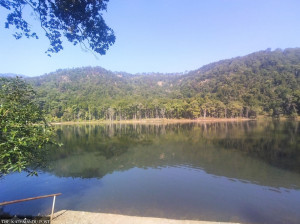Sudurpaschim Province
Monsoon-induced disasters occur every year but authorities ill-prepared to handle them
Hundreds of people are displaced by the monsoon disasters in Sudurpaschim Province year after year but the authorities rarely make disaster preparedness plans.
Sudurpaschim Bureau
Every year during monsoon, many districts in Sudurpaschim Province get inundated by floods and wrecked by landslides.
Though water-induced disasters claim lives and properties in the province year after year, the authorities are caught ill-prepared to mitigate the damage caused by the disasters.
The District Natural Disaster Management Committee, headed by the chief district officer, is responsible for rescue and relief operations, and coordinating with the local units, security personnel and disaster management social organisations during times of disaster. However, a lack of coordination among these bodies mars effective rescue and relief efforts.
“Floods and inundation are a yearly occurrence in these areas,” said Tej Bahadur Malla of Bedkot Municipality in Kanchanpur, one of the worst flood-affected areas in the district. “The authorities, however, are always caught unawares in times of disasters. Come monsoon, and we again fall victim to floods and inundation. The government does nothing all year to mitigate monsoon disasters.”
Around a dozen houses, including Malla’s, have been inundated, as the Postal Highway disrupted the water outlet system. The locals claimed the flooding was caused because the authorities concerned failed to manage water outlet systems while constructing the highway.
“Neither the municipality nor the highway project is willing to take the responsibility to resolve the problem,” said Malla.
More than 300 houses have already been inundated in Bhimdutta and Bedkot municipalities of Kanchanpur due to heavy rains in the past few days.
The Meteorological Forecasting Division has warned of heavy rainfalls for the next couple of days that may cause floods and inundation in these parts of the country. But the district authorities have not made any preparations to minimise the risks and to avert maximum damage. “We have asked the local bodies to make the necessary preparations but we don’t have any concrete disaster-preparedness measures as such,” said Nurahari Khatiwada, the chief district officer of Kanchanpur. “Some settlements in the district are affected by floods and inundation every year. The local units should move these settlements to safer locations during the dry season itself.”
The south-eastern part of Kailali district also gets inundated by floods in the Mohana, Kandhra and Karnali rivers every year. Similarly, the Mahakali, Jogbudha, Doda, Syali and Mohana rivers each monsoon wreak havoc in nearby settlements in Kanchanpur.
Hundreds of people are displaced by the water-induced disasters in the districts every year but the district authorities rarely make disaster-preparedness plans. This year, however, the district administration is well prepared for incidents of floods and inundations, claims Yagyaraj Bohara, the chief district officer of Kailali.
“Rainy season has begun in earnest. We have urged the locals in flood-prone areas to stay on high alert. The rescue teams of Nepal Army, Nepal Police and Armed Police Force are also on standby to conduct rescue operations in case of disasters,” said Bohara.
Meanwhile, with the onset of the rainy season, the hill districts of the province, such as Bajhang, are at high risk of landslides. A massive landslide in Kedarsyun Rural Municipality swept away 22 houses killing six people on Saturday. One person is still missing. On Sunday, an 11-year-old boy died when a landslide buried a house in Jayaprithvi Municipality.
Suresh Jethar, who was displaced by the landslide in Kedarsyun, complained that the rescuers had arrived at the incident site 14 hours after the disaster and stopped searching for the missing after merely 24 hours into the rescue operation.
“We were provided reliefs only after two days of the incident. The authorities are not concerned about the hardships of the displaced people,” said Jethara.
The District Disaster Management Committee, however, claimed that all concerned authorities are on high alert.
“The security personnel are prepared to rescue and provide relief to the victims,” said Chief District Officer Kamalraj Bhandari. He argued that the security personnel had reached the incident site of Kedarsyun late because of disrupted roads caused by landslides.
Various studies showed that dozens of settlements in the district are at high risk of landslides while settlements on the banks of Seti and other streams are prone to floods. In its report made public in 2017, Geohazards International—an international organisation working towards ending preventable deaths and suffering from natural disasters—stated that Bajhang is at high risk of landslides, and the district will see landslides in 6,630 places in case of an earthquake measuring 7 or above on the Richter scale.
(Bhawani Bhatta in Kanchanpur, Mohan Budhaair in Dhangadhi and Basanta Pratap Singh in Bajhang reported the story.)




 13.12°C Kathmandu
13.12°C Kathmandu










%20(1).jpg&w=300&height=200)

